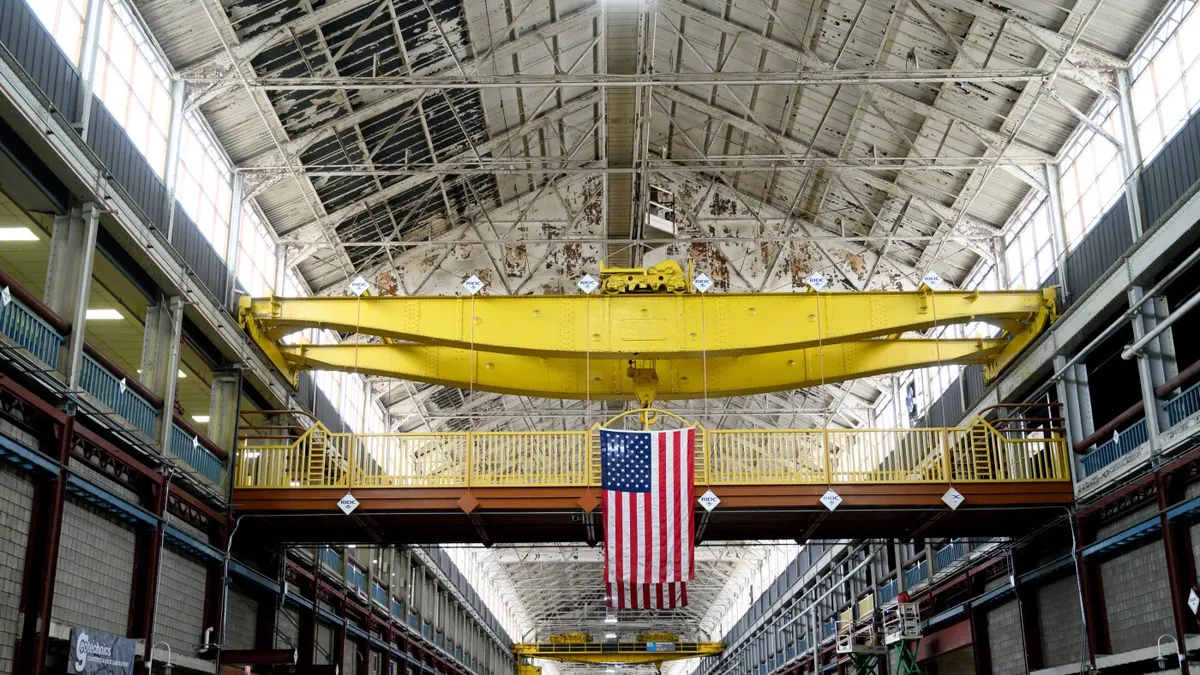
This article is the third installment in our Planet Money newsletter series focused on the intricate landscape of manufacturing in the United States. In the previous parts, we explored critical questions: Why are Americans not filling the available manufacturing jobs? What does economic research reveal about the premium pay associated with these positions? To stay updated with our series, subscribe here. As always, our podcast is available for your listening pleasure.
In our ongoing investigation into what makes manufacturing special, we highlighted last week the findings from economic research indicating that manufacturing jobs continue to offer a higher premium compared to many other sectors. Notably, Gordon Hanson, an esteemed economist from Harvard Kennedy School, emphasized the importance of manufacturing jobs for Americans lacking a college education, a demographic that greatly requires access to well-paying employment opportunities. However, Hanson cautioned against an excessive focus on manufacturing, arguing that the real issue lies not in the lack of manufacturing jobs, but rather in the scarcity of quality jobs for those without a degree. He advocates for policymakers to address this fundamental issue rather than solely aiming to revitalize manufacturing, which could inadvertently lead to economic repercussions such as trade wars and tariffs that may not yield the intended job growth.
Manufacturing remains significant for various reasons. In this newsletter, we delve into one such reason: the potential of a revitalized manufacturing sector to stimulate economic growth across wider regions of America and combat regional inequality. This theory is compelling, yet there exists a debate surrounding the extent to which politicians can effectively rejuvenate manufacturing and whether the anticipated regional benefits will materialize as expected.
During the late 20th and early 21st centuries, the advent of computers and free trade reshaped America's economy, leading to job opportunities increasingly concentrated in major urban centers, now referred to as superstar cities. Cities like San Francisco, New York, Boston, Los Angeles, Seattle, and Austin have witnessed significant employment growth, particularly in high-paying service sectors such as technology, finance, law, and medicine. Between 2008 and 2018, over 70% of the nation's employment growth occurred within these cities.
However, as these superstar cities flourished, they also experienced a dramatic rise in the cost of living, particularly concerning housing, making it increasingly challenging for working-class individuals to reside in these areas. The necessity of obtaining a college degree to access good-paying jobs further exacerbated the situation, as more than half of Americans over 25 lack a college education. In stark contrast, many former manufacturing towns that previously provided opportunities for those without degrees faced economic decline, losing good jobs and struggling with community disintegration, all while grappling with the social challenges that accompany deindustrialization.
The decline of manufacturing plants affected communities profoundly. It was not merely the loss of jobs but also the erosion of the economic ecosystems that these plants supported. Manufacturing, classified as a tradable sector, sells goods outside the local community, playing a crucial role in local economic health. David Card, a Nobel Prize-winning economist from UC Berkeley, noted that a locality’s growth is closely tied to its export base. For a community to thrive, it must generate revenue from external sources, rather than relying solely on internal transactions.
Tradable sectors encompass various industries beyond manufacturing, such as technology, finance, tourism, and healthcare. These sectors attract external wealth, while non-tradable sectors, including local restaurants and retailers, primarily circulate existing funds within the community. Oren Cass, chief economist at American Compass, emphasizes that solely relying on non-tradable sectors is unsustainable. The challenge lies in diversifying the economy to include more robust tradable sectors.
Economists have attempted to quantify the value of tradable sectors to local communities through measures like local multipliers, which estimate how many additional jobs are created in other sectors due to a job in a tradable sector. Enrico Moretti, a leading researcher in this field, found that each manufacturing job generates approximately 1.6 additional jobs in the community over a decade, thanks to the spending of manufacturing workers on local services.
While the 1.6 multiplier for manufacturing is significant, it pales in comparison to the higher multipliers associated with tech jobs, which can create five additional jobs for each tech position. The disparity in multipliers can be attributed to the varying wage levels across sectors, with tech jobs generally offering higher salaries, resulting in greater local spending.
Despite its importance, the manufacturing sector cannot singularly resolve regional economic disparities. Oren Cass argues that while manufacturing can serve as a vital economic driver, other sectors such as finance and tourism also hold potential for economic growth. However, he acknowledges that many communities may find it challenging to attract these high-value industries.
While some advocate for tariffs as a means to stimulate manufacturing, experts like Moretti express skepticism regarding their effectiveness in fostering widespread economic prosperity. The reality is that manufacturing jobs are increasingly automated, and new factories may not create the jobs needed to drive economic growth. Moreover, imposing tariffs could provoke retaliatory actions from foreign nations, jeopardizing the overall economy.
Despite these challenges, there is hope that targeted policies, such as workforce development programs and strategic subsidies, can help revitalize manufacturing. The Biden administration's multifaceted approach, which combines tariffs and subsidies, aims to boost specific manufacturing sectors. As new factories are being constructed across the country, particularly in Southern states, the impact of these policies remains to be seen. The forthcoming years will likely provide more insights into whether a manufacturing renaissance can indeed foster economic growth and reduce regional inequalities.